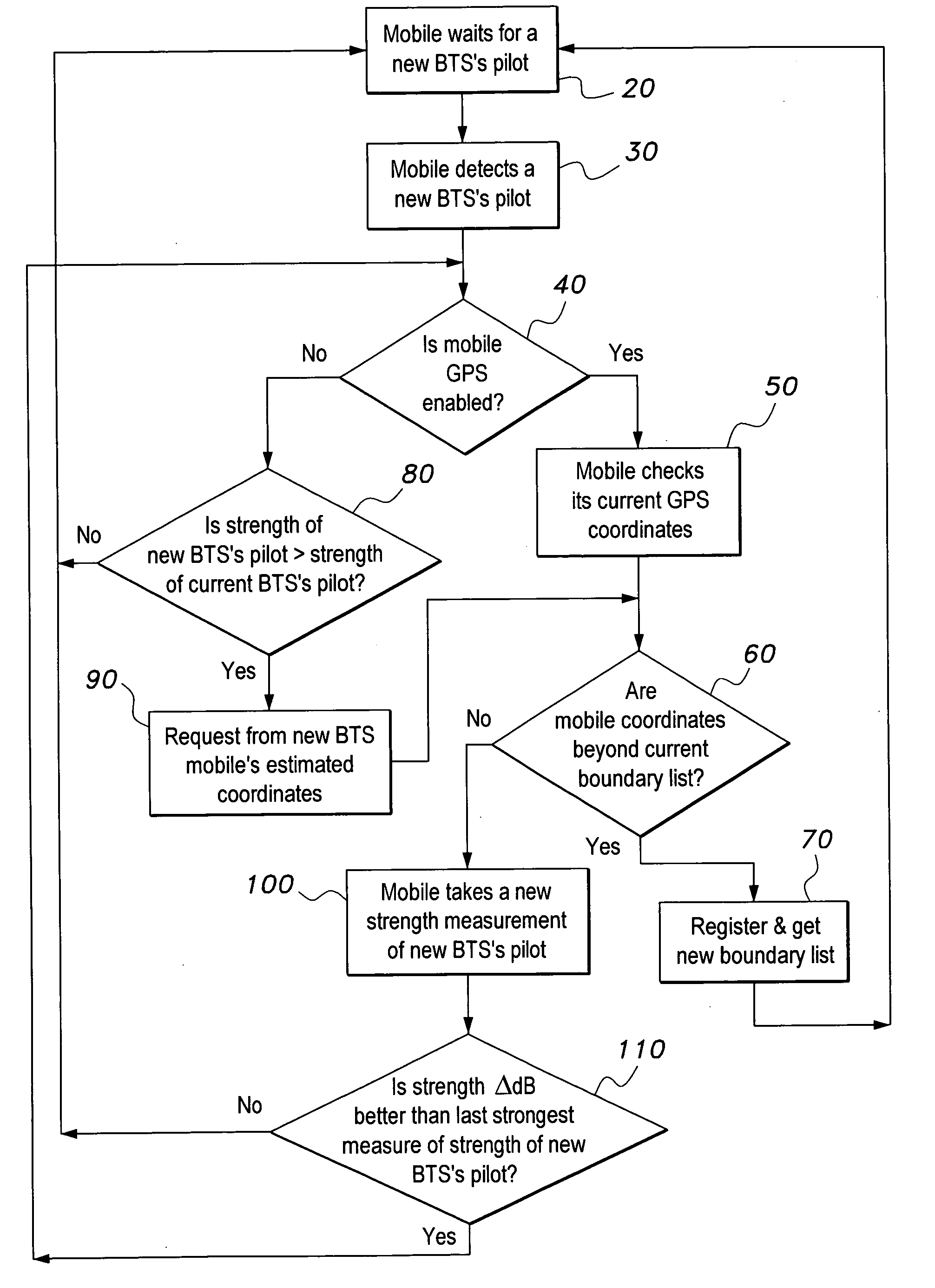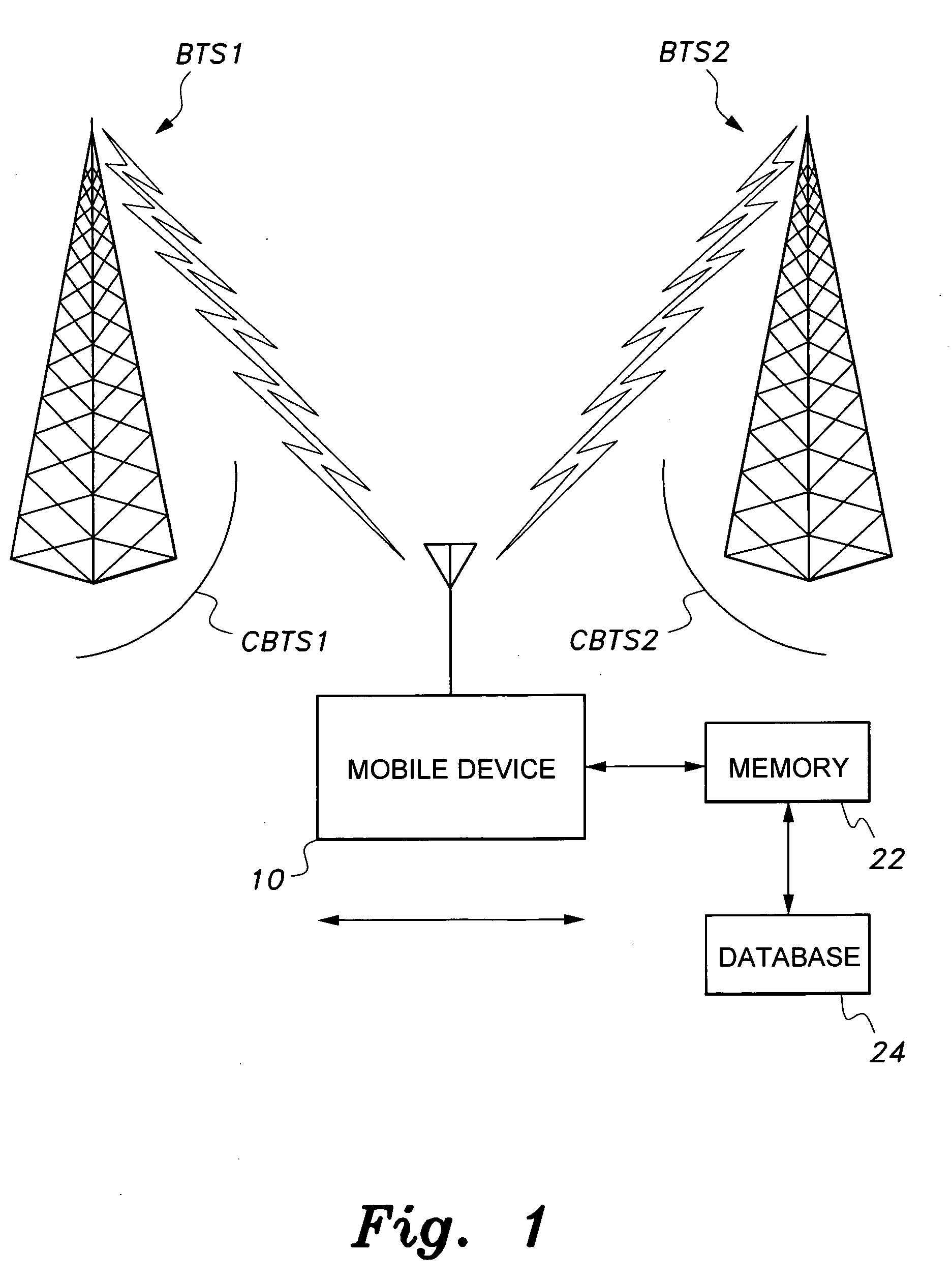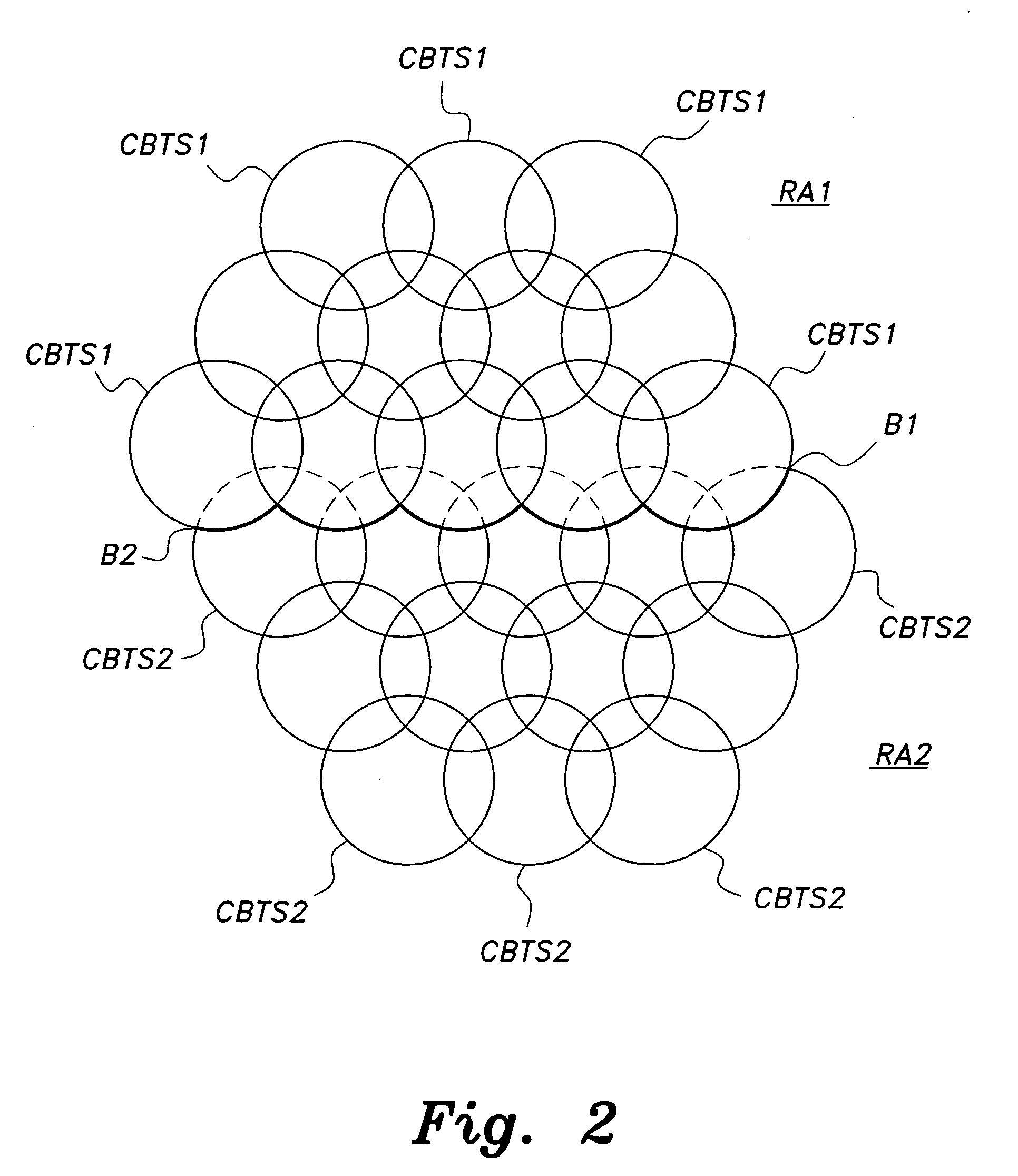Method for reducing the rate of registration in CDMA-based mobile networks
a mobile network and code division multiple access technology, applied in multiplex communication, wireless communication, wireless communication, etc., can solve the problems of missed calls, inaccurate identification of mobile devices, and low registration rate of distance-based registration methods, etc., to achieve the effect of reducing the registration ra
- Summary
- Abstract
- Description
- Claims
- Application Information
AI Technical Summary
Benefits of technology
Problems solved by technology
Method used
Image
Examples
Embodiment Construction
[0026]FIG. 1 illustrates a mobile device 10, such as a cellular telephone, for example, which is enabled for CDMA. In FIG. 1, mobile device 10 is in transit between two cells CBTS1, CBTS2 associated, respectively, with base station subsystems BTS1 and BTS2. In order to properly send and receive calls, the mobile device 10 must register in the appropriate cell, so that the cellular network system knows where to transmit the cellular signal. In order to maintain signal integrity, and prevent interruptions in communications (such as missed telephone calls, for example), mobile device 10 should remain registered with BTS1 when mobile device 10 is within the boundary of CBTS1, and should only register with BTS2 following crossing the boundary between CBTS1 and CBTS2.
[0027]FIG. 1 represents a simplified cellular system. In reality, a registration area, or zone, is comprised of a large number of cells associated with respective base station subsystems. Each cell is represented by a circle ...
PUM
 Login to View More
Login to View More Abstract
Description
Claims
Application Information
 Login to View More
Login to View More - R&D
- Intellectual Property
- Life Sciences
- Materials
- Tech Scout
- Unparalleled Data Quality
- Higher Quality Content
- 60% Fewer Hallucinations
Browse by: Latest US Patents, China's latest patents, Technical Efficacy Thesaurus, Application Domain, Technology Topic, Popular Technical Reports.
© 2025 PatSnap. All rights reserved.Legal|Privacy policy|Modern Slavery Act Transparency Statement|Sitemap|About US| Contact US: help@patsnap.com



